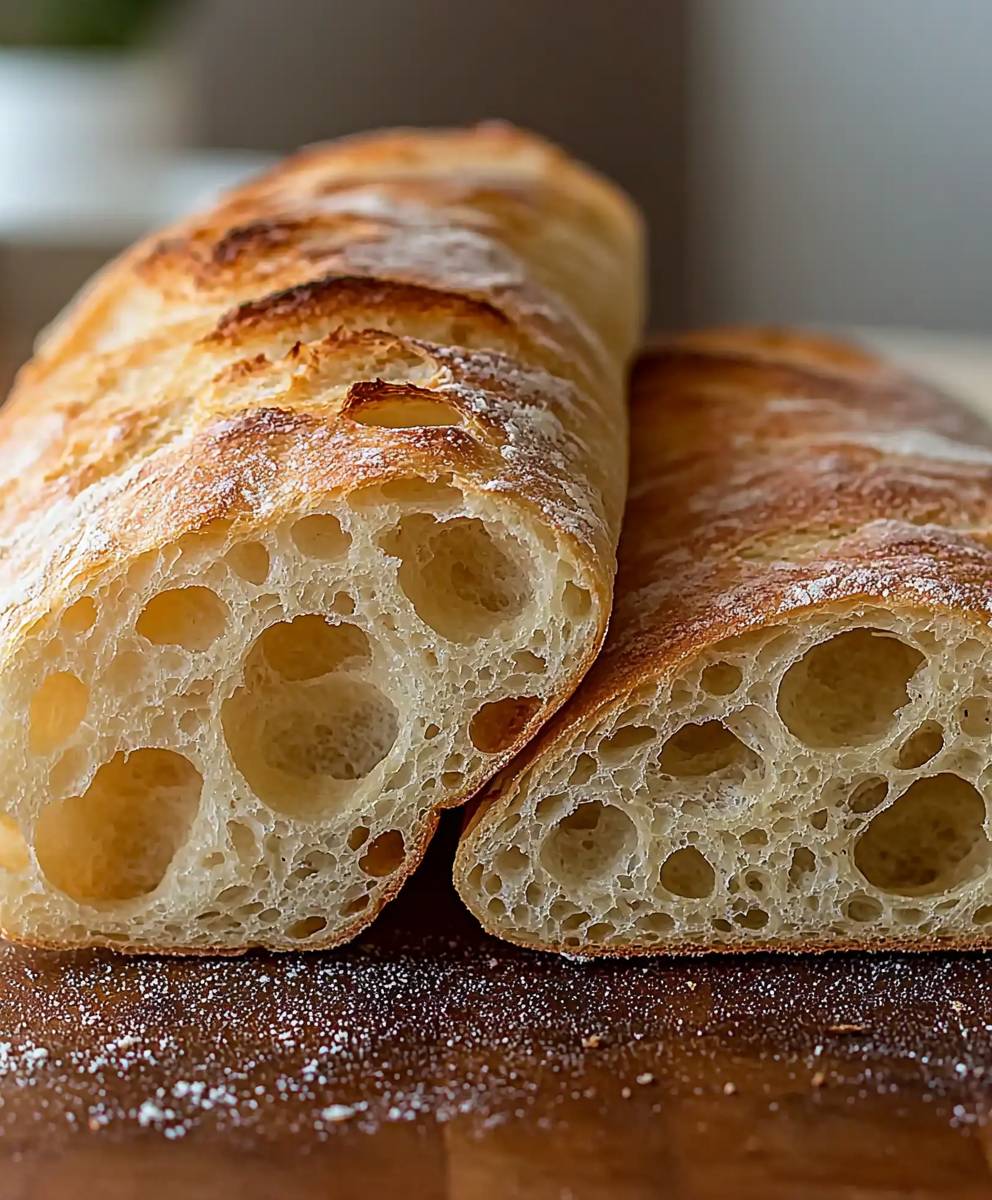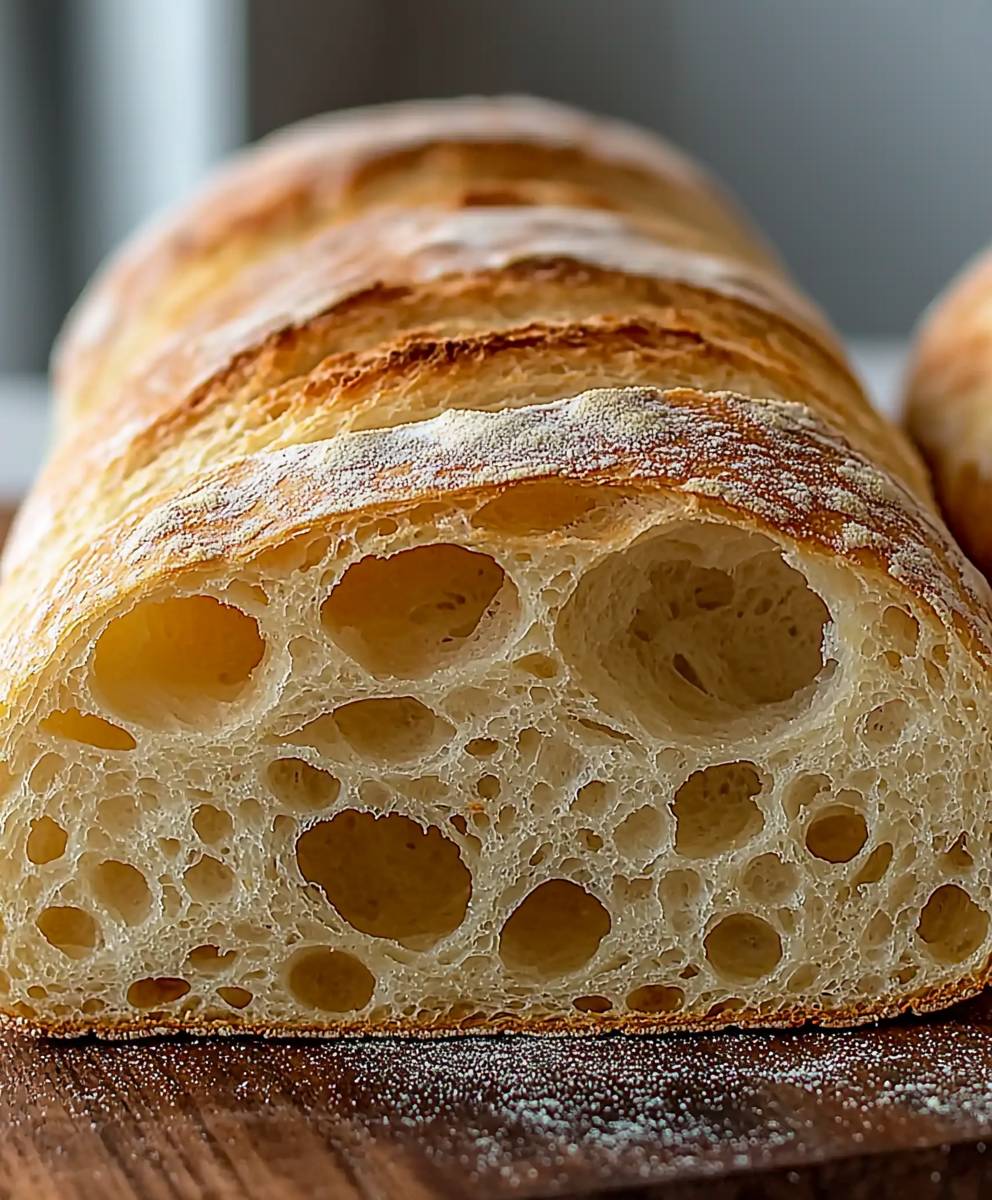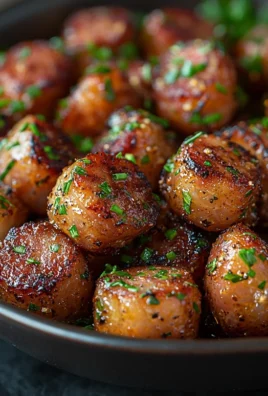Ciabatta bread, with its rustic charm and airy crumb, is more than just a loaf; it’s an experience. Imagine sinking your teeth into a slice, the crisp crust giving way to a soft, chewy interior, perfect for soaking up olive oil or cradling your favorite sandwich fillings. Have you ever wondered about the story behind this beloved bread?
Born in 1980s Italy as a response to the rising popularity of French baguettes, ciabatta bread (meaning “slipper” in Italian, due to its characteristic shape) quickly became a national treasure. Its unique texture, achieved through a high-hydration dough and careful fermentation, sets it apart from other breads. The large, irregular holes within the crumb are a testament to the baker’s skill and the bread’s quality.
What makes ciabatta so irresistible? It’s the delightful contrast between the crunchy exterior and the soft, almost custardy interior. Its subtle, slightly tangy flavor complements a wide range of dishes, from simple bruschetta to hearty paninis. Plus, its versatility makes it a favorite for both home cooks and professional chefs. Whether you’re a seasoned baker or just starting out, mastering the art of ciabatta is a rewarding culinary journey. Let’s embark on that journey together!
Ingredients:
- 1 large ciabatta loaf (about 16 inches long), preferably day-old
- 1/2 cup extra virgin olive oil, plus more for drizzling
- 4 cloves garlic, minced
- 1/4 cup fresh basil leaves, chopped
- 1/4 cup fresh parsley leaves, chopped
- 1/4 cup grated Parmesan cheese, plus more for serving
- 1/4 cup grated Pecorino Romano cheese
- 1/4 teaspoon red pepper flakes (optional)
- Salt and freshly ground black pepper to taste
- Optional toppings: sun-dried tomatoes, olives, artichoke hearts, roasted red peppers, mozzarella cheese
Preparing the Garlic Herb Oil:
This step is crucial for infusing the ciabatta with that amazing flavor. Don’t skimp on the garlic or the fresh herbs!
- In a small bowl, combine the 1/2 cup of extra virgin olive oil, minced garlic, chopped basil, chopped parsley, Parmesan cheese, Pecorino Romano cheese, and red pepper flakes (if using).
- Season with salt and freshly ground black pepper to taste. Remember, the cheeses are already salty, so start with a small amount of salt and adjust as needed.
- Stir well to combine all the ingredients. Let the mixture sit for at least 15 minutes, or even longer, to allow the flavors to meld together. This is where the magic happens! The longer it sits, the more flavorful the oil will become. You can even prepare this garlic herb oil a day ahead and store it in the refrigerator. Just bring it to room temperature before using.
Preparing the Ciabatta Bread:
Now comes the fun part getting that ciabatta ready for its transformation! The key here is to create enough surface area for the garlic herb oil to soak in, but without completely destroying the loaf.
- Preheat your oven to 375°F (190°C).
- Using a serrated bread knife, carefully slice the ciabatta loaf horizontally, creating two halves. Think of it like making a giant sandwich.
- Place the two halves of the ciabatta, cut-side up, on a baking sheet lined with parchment paper. The parchment paper will prevent the bread from sticking and make cleanup a breeze.
Applying the Garlic Herb Oil and Toppings:
This is where we load up the ciabatta with all that deliciousness! Be generous with the garlic herb oil it’s what makes this dish so special.
- Using a spoon or pastry brush, generously spread the garlic herb oil mixture evenly over the cut surfaces of both ciabatta halves. Make sure to get into all the nooks and crannies! Don’t be afraid to use all of the oil the bread will soak it up beautifully.
- If you’re using any optional toppings, now is the time to add them. Some of my favorites include sun-dried tomatoes (oil-packed, drained and chopped), Kalamata olives (pitted and sliced), artichoke hearts (quartered), roasted red peppers (sliced), and mozzarella cheese (shredded). Get creative and use whatever you have on hand!
- If you’re adding mozzarella cheese, sprinkle it evenly over the garlic herb oil and any other toppings you’ve added.
Baking the Ciabatta Bread:
The baking process is all about getting the bread nice and toasty, and melting any cheese you’ve added. Keep a close eye on it to prevent burning!
- Place the baking sheet with the ciabatta in the preheated oven.
- Bake for 12-15 minutes, or until the bread is golden brown and crispy around the edges, and the cheese (if using) is melted and bubbly. The exact baking time will depend on your oven, so keep a close eye on it.
- If you want the top to be extra golden brown, you can broil it for the last minute or two, but be very careful not to burn it! Watch it like a hawk!
Serving and Enjoying:
The best part! This ciabatta bread is perfect as an appetizer, a side dish, or even a light meal. Serve it warm and enjoy!
- Remove the baking sheet from the oven and let the ciabatta cool slightly for a few minutes before slicing.
- Using a sharp knife, slice the ciabatta into individual portions.
- Drizzle with a little extra virgin olive oil (optional).
- Sprinkle with additional grated Parmesan cheese (optional).
- Serve immediately and enjoy! This ciabatta bread is best enjoyed warm, when the bread is still crispy and the flavors are at their peak.
Tips and Variations:
- Make it spicy: Add more red pepper flakes to the garlic herb oil for a spicier kick.
- Add different herbs: Experiment with different herbs, such as oregano, thyme, or rosemary.
- Use different cheeses: Try using different cheeses, such as Asiago, Fontina, or provolone.
- Add vegetables: Add other vegetables, such as mushrooms, spinach, or zucchini.
- Make it a meal: Top the ciabatta with grilled chicken, shrimp, or vegetables for a heartier meal.
- Day-old bread is best: Using day-old ciabatta bread helps prevent it from becoming soggy when you add the garlic herb oil.
- Don’t overcrowd the baking sheet: If you’re making a large batch, bake the ciabatta in batches to ensure even cooking.
- Adjust baking time as needed: The baking time may vary depending on your oven, so keep a close eye on the ciabatta and adjust the baking time as needed.
Storage Instructions:
If you have any leftover ciabatta bread (which is unlikely!), you can store it in an airtight container at room temperature for up to 2 days. To reheat, simply wrap it in foil and bake it in a preheated oven at 350°F (175°C) for a few minutes, or until heated through. You can also reheat it in a toaster oven or microwave, but it won’t be as crispy.
Enjoy!
I hope you enjoy this recipe as much as I do! It’s a simple, yet incredibly flavorful dish that’s perfect for any occasion. Let me know in the comments below if you try it and what variations you come up with!

Conclusion:
And there you have it! This Ciabatta bread recipe is more than just a set of instructions; it’s an invitation to experience the joy of baking and the unparalleled satisfaction of creating something truly delicious from scratch. I genuinely believe that once you’ve tasted the airy crumb and delightfully crisp crust of homemade ciabatta, you’ll never look at store-bought bread the same way again.
But why is this recipe a must-try, you ask? It’s simple: the flavor is incredible. The long fermentation process develops a complex, slightly tangy taste that’s simply unmatched. Plus, the high hydration dough creates that signature open crumb structure that’s perfect for soaking up olive oil, balsamic vinegar, or your favorite sandwich fillings. Its a textural masterpiece!
Beyond the amazing flavor and texture, this recipe is also surprisingly rewarding. While it requires some patience due to the fermentation time, the actual hands-on work is minimal. You’ll be amazed at how a few simple ingredients can transform into something so special. It’s a fantastic way to impress your friends and family, and it’s a skill you’ll be proud to have.
Now, let’s talk about serving suggestions and variations! The possibilities are truly endless. Of course, ciabatta is fantastic simply sliced and served with a drizzle of olive oil and a sprinkle of sea salt. But it’s also incredible as the base for sandwiches. Think Italian subs piled high with cured meats, cheeses, and roasted vegetables. Or how about a Caprese sandwich with fresh mozzarella, juicy tomatoes, and fragrant basil?
For a heartier meal, use ciabatta to make bruschetta. Toast slices of bread and top them with your favorite combinations chopped tomatoes, garlic, and basil; roasted red peppers and goat cheese; or even a simple white bean and rosemary spread.
And don’t forget about croutons! Cube the ciabatta, toss it with olive oil and herbs, and bake until golden brown and crispy. They’re the perfect addition to salads and soups.
Looking for variations? Try adding different herbs and spices to the dough. Rosemary, thyme, and oregano are all excellent choices. You could also incorporate sun-dried tomatoes, olives, or even roasted garlic for a burst of flavor. For a sweeter twist, add a touch of honey or maple syrup to the dough.
Here are a few more ideas to get your creative juices flowing:
Ciabatta Pizza:
Use a flattened ciabatta loaf as a pizza base. Top with your favorite sauce, cheese, and toppings, and bake until bubbly and golden brown.
Ciabatta French Toast:
The sturdy texture of ciabatta makes it perfect for French toast. Soak slices in a custard mixture and cook until golden brown and delicious.
Ciabatta Bread Pudding:
Use stale ciabatta to make a comforting bread pudding. Add dried fruits, nuts, and spices for a truly decadent treat.
I truly hope you’ll give this Ciabatta bread recipe a try. I’m confident that you’ll love the results. It might seem a little daunting at first, but I promise it’s worth the effort. Remember to be patient with the dough and don’t be afraid to experiment with different flavors and variations.
Once you’ve made your own ciabatta, I’d love to hear about your experience! Share your photos and stories in the comments below. Let me know what variations you tried and what your favorite ways to serve it are. Happy baking! I can’t wait to see what you create!
Ciabatta Bread: The Ultimate Guide to Baking and Enjoying It
Flavorful and easy ciabatta bread appetizer or side dish. Crispy loaf infused with garlic, herbs, and Parmesan cheese.
Ingredients
- 1 large ciabatta loaf (about 16 inches long), preferably day-old
- 1/2 cup extra virgin olive oil, plus more for drizzling
- 4 cloves garlic, minced
- 1/4 cup fresh basil leaves, chopped
- 1/4 cup fresh parsley leaves, chopped
- 1/4 cup grated Parmesan cheese, plus more for serving
- 1/4 cup grated Pecorino Romano cheese
- 1/4 teaspoon red pepper flakes (optional)
- Salt and freshly ground black pepper to taste
- Optional toppings: sun-dried tomatoes, olives, artichoke hearts, roasted red peppers, mozzarella cheese
Instructions
- Prepare the Garlic Herb Oil: In a small bowl, combine the 1/2 cup of extra virgin olive oil, minced garlic, chopped basil, chopped parsley, Parmesan cheese, Pecorino Romano cheese, and red pepper flakes (if using). Season with salt and freshly ground black pepper to taste. Stir well and let sit for at least 15 minutes to allow flavors to meld.
- Prepare the Ciabatta Bread: Preheat oven to 375°F (190°C). Slice the ciabatta loaf horizontally into two halves. Place the halves, cut-side up, on a baking sheet lined with parchment paper.
- Apply the Garlic Herb Oil and Toppings: Generously spread the garlic herb oil mixture evenly over the cut surfaces of both ciabatta halves. Add any optional toppings, such as sun-dried tomatoes, olives, artichoke hearts, roasted red peppers, or mozzarella cheese.
- Bake the Ciabatta Bread: Place the baking sheet in the preheated oven and bake for 12-15 minutes, or until the bread is golden brown and crispy around the edges, and the cheese (if using) is melted and bubbly. Broil for the last minute or two for extra golden brown, if desired, watching carefully to prevent burning.
- Serve and Enjoy: Remove from oven and let cool slightly before slicing. Slice into individual portions. Drizzle with extra virgin olive oil and sprinkle with additional grated Parmesan cheese, if desired. Serve immediately and enjoy warm.
Notes
- Day-old ciabatta is best to prevent sogginess.
- Adjust baking time as needed based on your oven.
- The garlic herb oil can be prepared a day ahead and stored in the refrigerator. Bring to room temperature before using.
- Get creative with toppings!
- For a spicier kick, add more red pepper flakes.
- Experiment with different herbs and cheeses.
- To reheat leftovers, wrap in foil and bake at 350°F (175°C) until heated through.





Leave a Comment